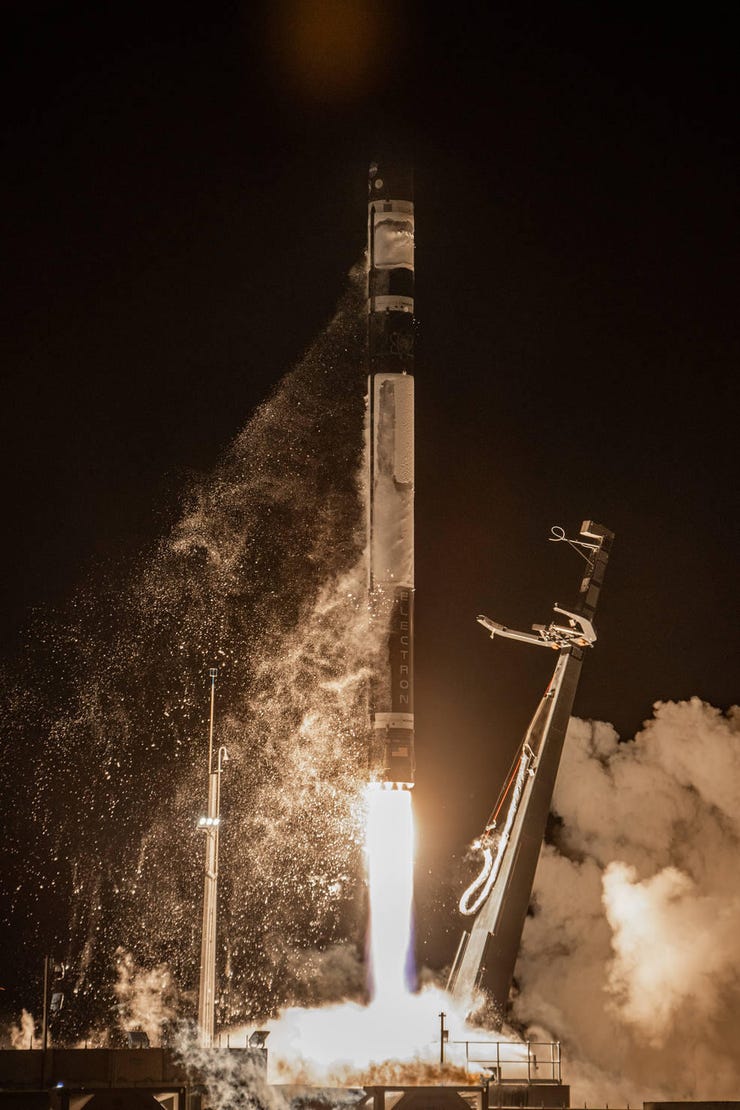































With the help of the private firm Rocket Lab, NASA on Tuesday sent a small, cube satellite on a journey to explore a never-before-flown orbit around the Moon, laying the foundation for future lunar operations.
The CAPSTONE mission is a key step in advancing NASA's Artemis program, which will culminate with NASA landing the first woman and first person of color on the Moon. The mission is also another successful milestone for NASA in its efforts to support a commercial space economy.

An image of the Cislunar Autonomous Positioning System Technology Operations and Navigation Experiment, or CAPSTONE, launching aboard Rocket Lab's Electron rocket from the Rocket Lab Launch Complex 1 on the Mahia Peninsula of New Zealand Tuesday, June 28, 2022.
Image: Rocket LabThe aim of CAPSTONE (Cislunar Autonomous Positioning System Technology Operations and Navigation Experiment) is to test different technologies in a lunar orbit called a "near rectilinear halo orbit" (NRHO). In the near future, NASA wants to use this particular orbit as a path for Gateway -- a space station that will provide support for deep space exploration.
SEE: NASA's Mars helicopter has a problem. This clever software trick could fix it
The microwave oven-sized satellite (a CubeSat) tasked with the CAPSTONE mission launched at 5:55 am ET on Tuesday on board Rocket Lab's Electron rocket. The satellite is currently attached to Rocket Lab's Lunar Photon, a spacecraft that will send CAPSTONE to deep space.
Shortly after the launch, Lunar Photon separated from the Electron rocket's second stage. Over the next six days, Photon's engine will periodically ignite to accelerate it beyond low-Earth orbit. After that, Photon will release the satellite on a ballistic lunar transfer trajectory to the Moon. CAPSTONE will then use its own propulsion and the Sun's gravity to navigate the rest of the way.
The journey to the lunar orbit should take about four months. In about a week, anyone who wants to keep track of the CAPSTONE satellite will be able to via NASA's Eyes on the Solar System interactive real-time 3D data visualization. NASA will post updates about when to see CAPSTONE in the simulated view of the solar system on NASA's Ames Research Center's home page, as well as Twitter and Facebook.
Once it's in orbit, CAPSTONE will fly within 1,000 miles of the Moon's North Pole on its near pass and 43,500 miles from the South Pole at its farthest. Making a full orbit around the Moon will take six-and-a-half days. The satellite will stay there for at least six months.
Among other things, the journey offers the opportunity to test out the Cislunar Autonomous Positioning System developed by the firm Advanced Space -- a spacecraft-to-spacecraft navigation and communications system. The system could allow future spacecraft to determine their position in space without relying on tracking from Earth.
 Tags quentes :
Inovação
Espaço
Tags quentes :
Inovação
Espaço